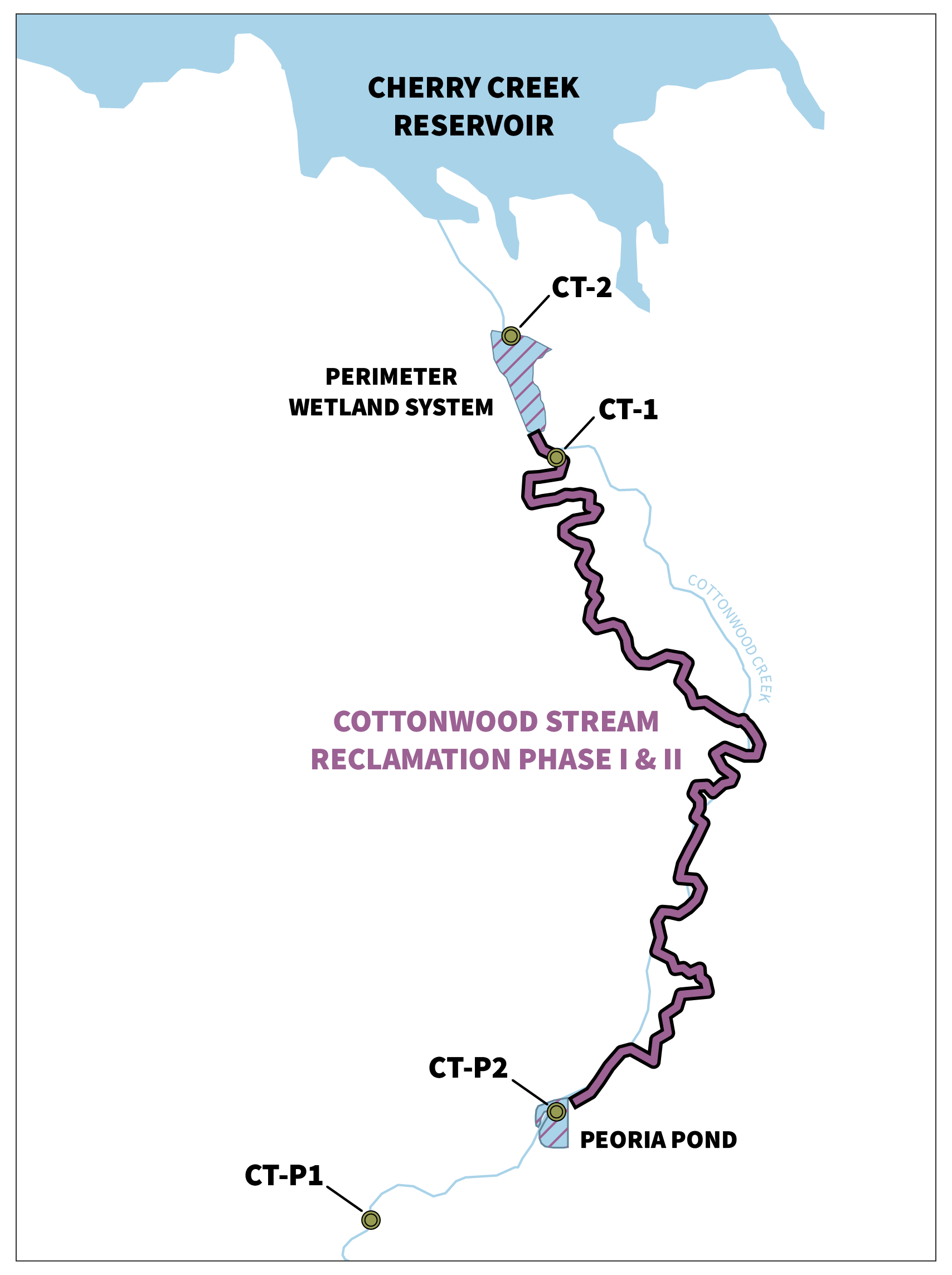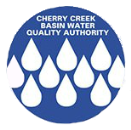PRF Monitoring
Key Takeaways:
During storm events in 2019, the Cottonwood Creek “treatment train” reduced:
- Phosphorus concentrations by 69%,
- Nitrogen concentrations by 12% , and
- Suspended Solids by more than 90%
The Cherry Creek Basin has multiple pollution reduction facilities (PRFs) in various locations through the watershed. The Cottonwood Creek Pollutant Reduction Facilities provide phosphorus and sediment reduction during storm events. Together, stream reclamation and wetland detention systems comprise a passive treatment train approach widely implemented by CCBWQA throughout the basin since the 1990s as an effective water quality strategy.
Based upon the data collected in WY 2019, the Cottonwood Creek PRF treatment train (Peoria Pond, Phases 1 and 2 of stream reclamation completed on Cottonwood Creek downstream, and the Perimeter Pond) functioned by reducing TP concentrations by approximately 52% under base flow conditions and 69% during storm events. Sediment concentrations, measured as TSS, were reduced by approximately 74% under base flow conditions and 95% during storm flows. Based on the differences in reduction during high and low flow events, these PRFs functioned as designed to reduce phosphorus and sediment loading during WY 2019.

Learn More in the 2019 Monitoring Report
Useful Links

Cottonwood Creek Treatment Train
Summary
Upstream to Downstream Concentrations Over Time
Net Change Over Time
Percent Change Over Time
Hey! This page is interactive.
- Change the start and end dates to change the dates on the graph
- To learn more about a specific data point, hover over it with your mouse.
